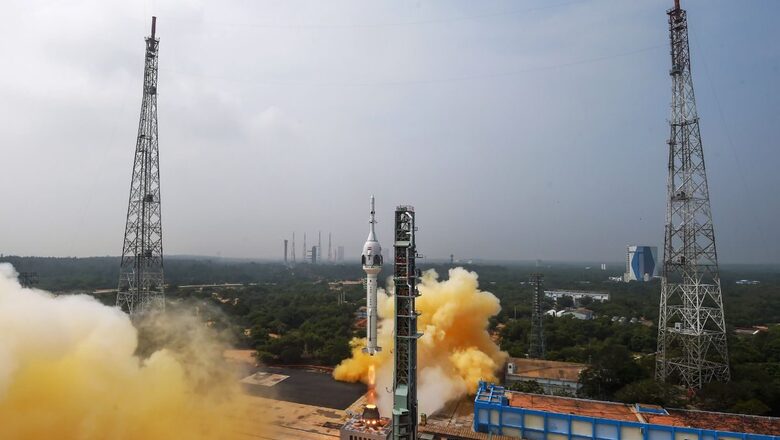
views
India is starting its most ambitious journey into space with the beginning of the Gaganyaan mission. On the morning of October 21, the lift-off of the Gaganyaan mission’s unmanned test flight, TV-D1, or Test Vehicle D1, a module of the Rs 9000 crore mission, successfully took place.
This test will examine ISRO’s capability for the Crew Escape System. The purpose of this system is to save the lives of the Indian astronauts in the event of a failure or accident in the transonic range or near the speed of sound velocity. The test, lasting less than 9 minutes, will simulate an accident scenario at a 17-kilometre height where five rapidly firing motors will ensure that the command module, where the crew is placed, is moved at least 2 kilometres away from the out of control and burning rocket.
Gaganyaan mission has a special place in India’s space ascent as it crosses the most significant milestone of being technically equipped to not only send a living human into space, but also to bring them back safely. A mission of this scale needs a convergence of multiple technologies, from rocketry used for thrusters to fluid mechanics for controlled flight, biosciences to create life support systems and material sciences for components especially the high resistance ones such as the heat shield. All of these systems and technologies need to work in perfect unison for the mission to succeed and the room for error is zero.
Adding the capability to successfully launch humans into space would be crucial in the emerging space sector. First, it would qualify India to play an active role in the emerging space tourism sector, expected to reach up to Rs 112,000 crore, something which the US, China and Russia along with major private companies such as SpaceX, Virgin and Blue Origin are actively working on. Gaganyaan mission costs less than half of Project Mercury, the first American mission for manned spaceflight which cost over Rs 18,000 crore and with a workforce of 20 lakh people. Second, the ability of human space flight is the precursor for India’s own Space Station by 2035 and it also would give a foothold in other space stations where we can play an active role in transporting men and material into them. Similarly, mastering this skill will eventually lead us to be able to make the footprint of an Indian on the Moon and beyond. Lastly, the success of Gaganyaan will have a colossal impact on the younger generation of the nation. A school child today in a remote Indian town or major city, can look up into the sky and aspire to make a spaceflight, and walk on the Moon and Mars – the nation is scientifically and economically capable of achieving this.
Space is hostile, complicated and fraught with dangers. We have seen how a piece of loose foam from the fuel tank hitting the wing of Orbiter Columbia led to the death of Kalpana Chawla along with 6 other astronauts in 2003. In 1967, the Moon Mission, Apollo Program, started with a fire accident in the Command Module of Apollo 1 killed three leading astronauts and potential moonwalkers in a matter of a few minutes. And in 1971, a sudden decompression of the command module killed 3 renowned Soviet cosmonauts in a matter of seconds.
For Gaganyaan to succeed, we will have to go through multiple tests, involving many technologies put to a high-stress environment with no time to react. The eventual success of the mission will surely herald a new age in the Indian technology space of atmanirbharta or self-reliance in excellence. In 1984, when the first and only Indian citizen to go into space, Wing Commander Rakesh Sharma, aboard the Soviet Space Station Salyut, looked at India from space, he said, “Saare Jahan se Acha”. Four decades later, in 2024, there will be a group of Indian ‘Gaganauts’ who will echo the same thoughts, but this time, in an Indian spacecraft, as the Atmanirbhar Bharat rises on the map of the planet.
The author is a space scientist and former advisor for Technology to the 11th President of India, Dr. APJ Abdul Kalam. He has worked in the Indian Institute of Space Sciences and Technology of ISRO. Views expressed in the above piece are personal and solely that of the author. They do not necessarily reflect News18’s views.




















Comments
0 comment